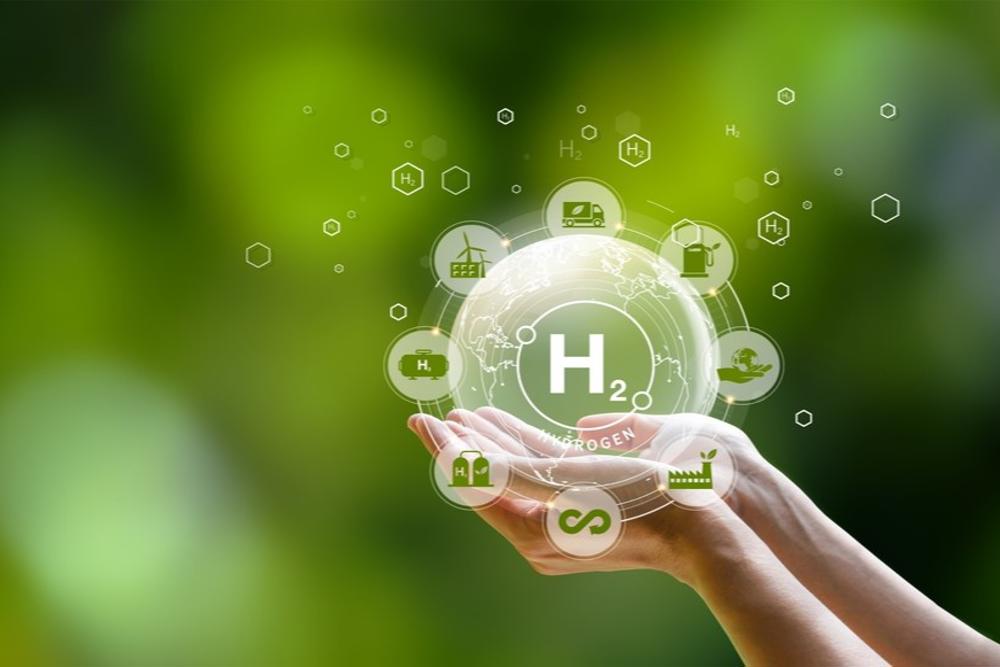
Renewable energy company EPRO Advance Technology (EAT) has announced a crucial breakthrough process in green hydrogen energy that generates large amounts of ultra-pure hydrogen on demand, while also solving the long-standing challenges of the mass storage, transportation and safe handling of hydrogen.
EAT has developed a revolutionary porous silicon material, known as Si+, which has the ability to generate ultra-pure hydrogen from a water source and which acts as a solid-state hydrogen generating material – one that is compact, robust and easily transportable – solving many of the issues that have inhibited the growth of the hydrogen economy.
Since Si+ offers a guaranteed source of safe on-demand energy, it has multiple uses.
It can facilitate the phasing out of expensive back-up power diesel generator sets (gensets), it is an ideal replacement for marine fuel oil which is due to be phased out next year and it also offers a thermal energy storage solution through the exothermic heat that is released during the Si+ hydrogen generation reaction.
Furthermore, Si+ will support the mass roll out of hydrogen fuel cell electric vehicles and, ultimately, hydrogen-powered flights.
EAT chief executive Albert Lau said: “Si+ is the first distributable, long duration energy storage material of grid parity.
“It represents a significant breakthrough of green hydrogen energy, and it will transform hydrogen from the fuel of the future to the fuel of tomorrow.”
“Si+ technology has the potential to bring forward the hydrogen economy by decades.
“It can allow us to fully exploit our natural resources, delivering hydrogen safely to locations of need through existing infrastructure and transport systems.
Showing that Si+ can be used to generate hydrogen from a water source, Lau said: “You could compare our inert vacuum-packed Si+ cartridges to those coffee machine pods and capsules where you just add water, and you release the product!”
Si+ allows intercontinental energy distribution to local, on-demand hydrogen generators and hydrogen refuelling stations using existing infrastructure.
Traditional container logistics can be used to deliver Si+ rather than expensive pressurised tube trailers, thereby reducing the up-front capital expenditure.
A liquid hydrogen tanker ship can transport 88.5 tonnes of hydrogen.
A standard 20-foot equivalent container can carry 2.7 tonnes of this ‘solid-state’ hydrogen, which means that just 33 containers is equivalent to the full liquid hydrogen tanker’s maximum delivery capacity.
Unlike other solid-state hydrogen compounds, Si+ doesn’t store hydrogen.
That’s because the hydrogen comes from water, making Si+ ultra-safe compared with other ‘hydrogen carrying’ materials.
Small Si+ hydrogen refuelling stations which generate hydrogen locally can share the footprint of an existing fuel station, dramatically reducing capital and operational expenditure at those sites.
Si+ offers an indefinite shelf life too and the benign silicates produced from the hydrogen generation are used directly for the manufacturing of high value green cements and zeolites.
The raw material of Si+ is metallurgical grade silicon, which be sourced from something as vastly abundant as sand, together with a carbon source, but also from recycled silicon from broken or end-of-life solar panels, most of which currently head to landfill, especially important to Si+ and its carbon footprint since the process doesn’t produce any new carbon.
Si+ facilitates a guaranteed form of energy when compared with renewable energy, which is intermittent, and its carbon footprint is in the range of low carbon to carbon negative.
Si+ functions particularly well in locations of inadequate grid infrastructure, such as Africa, where fossil fuels are used to generate 40% of electricity.
Si+ therefore supports green transition.
Lau continued: “In replacing diesel-powered gensets, portable power sources that use a motor to generate electricity in an emergency, Si+ can truly be described as the green mirror-image of diesel fuel.
“A 4MVA back-up genset combusts 18,000 litres of fuel a year in standard maintenance alone – according to laws of Hong Kong – producing 47 tonnes of carbon dioxide per annum. Si+ would eliminate that fuel, cost and pollution.”
Commercial and strategic partnerships with organisations in Japan, China and Hong Kong have already been established by EAT and future commercial developments of the Si+ process include delivering domestic gensets in Europe next year and commercial / stationary gensets to be trialled in the construction industry in Hong Kong.
The system is being reviewed by the Hong Kong Airport Authority as possible replacements of its backup gensets and in setting up an Si+ Hydrogen Refuelling Station at Hong Kong International Airport.
Lau added: “It’s my belief that the possibilities of Si+ are limitless.
“And we now need partners who specialize in several fields to construct what I call the Si+ universe.
“That means collaborations with the renewable energy generation industry, fuel station operators, construction organisations, desalination companies, logistics groups and more.
“With this announcement, I hereby call upon those who want to share my vision to construct the Si+ universe together, to help effect this green transition, to achieve net zero and to help us avoid a climate disaster.”











